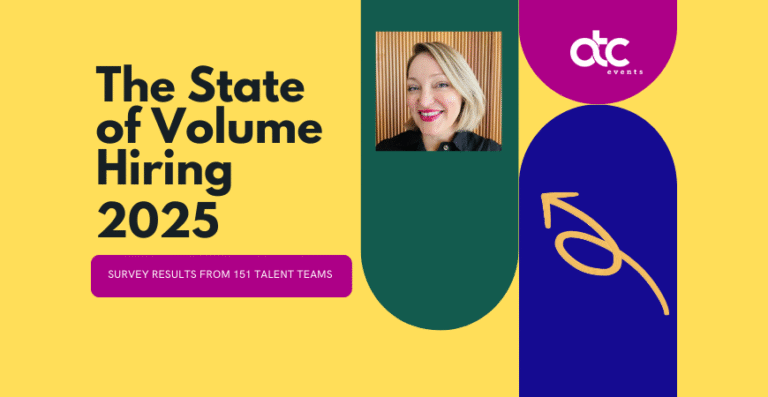Recruiters have not paid very much attention to the quantitative side of the quality of hire. We frequently talk about hiring manager satisfaction and other subjective measures of quality. Still, I don’t know of any recruiting function that has even tried to quantitatively measure the value or contribution of people that they have hired.
I have used examples in the past that place a value on a function within an organization in terms of its cumulative contribution to sales, the number of patents produced, or the depth of contact with a customer. Yet, it has been hard to bring this down to an individual level and precisely say that employee A contributed X dollars of value. We never get to this level of precision (or even want to), but we are getting closer to understanding and measuring the skills and attributes contributing to overall organizational success.
For example, which recruiter is the “best” in your department? Which assessment test provides a higher quality candidate? How much do diverse hires contribute to success? How many good candidates did we reject because of faulty assessment practices or inappropriate tools? We could add many more questions to this list, but getting answers even to these few is challenging.
Good answers would require a specific standard you would like to achieve or a quantified definition of “best” and “successful.” Once we have defined those, finding a process and tool to measure them is the challenge.
Some firms are trying to do just this. They are applying quantitative measurements to talent management, recruiting, and HR. And this puts recruiters and HR professionals in a strange space – that of determining with some level of certainty which people perform better than others, which skills sets are more likely to lead to higher productivity or quality, and what are the traits of managers who have low turnover, or which functions add the most value (revenue/loyalty/patents).
Most people are uneasy about quantitative measurements of soft skills and people. It is hard to believe that we can assess individuals in such a way. And, measuring individuals’ outputs and contributions is problematic.
Today, we are seeing sophisticated algorithms and software that make it easier to gather and mine data. We can analyze trends and patterns. We can conduct longitudinal studies and establish base levels so that the impact of future changes can be observed and correlated. Many of these capabilities are included in assessment, CRM, and performance applications.
Talent intelligence software, which I mentioned in last week’s article, is accelerating our ability to quantify and analyze the workforce.
Books are appearing that educate and explain how to measure people and their performance. One example, Investing in People: Financial Impact of Human Resource Initiatives, is a Society of Human Resources Management (SHRM) inspired book written by two big names in the HR measurement area: Wayne Cascio and John Boudreau. In the chapters titled “The High Cost of Employee Separation,” The Payoff from Enhanced Selection,” and “Costs and Benefits of HR Development Programs,” they lay out an accessible framework for presenting HR data in a way that business managers can appreciate.
Another book, even though written over ten years ago, remains relevant is Investing in People: Financial Impact of Human Resource Initiatives, written by William A. Schiemann. Schiemann runs a consultancy that focuses on measurement. This book introduces the concept of “people equity” and shows how some employees are far more valuable than others. He also shows how to build equity and improve business performance in ways traceable to people.
Quantitive measurement is now possible with the maturation of artificial intelligence, talent intelligence tools, and more robust algorithms. The language of human resources and recruiting is changing in ways that will transform organizations and how we think about work.
Many HR professionals and recruiters use subjective language focused on feelings or beliefs. They may speak about how a candidate feels about a given action or believe that the job market is competitive for a certain position without concrete data supporting those statements.
For example, I might hear a recruiter say, “I felt that the extra time spent with that candidate was worth it because they will now say nicer things about us to other potential candidates.” As an alternative, a CEO might phrase it this way, “Spending a few extra minutes with the candidate could result in our firm making 2 or 3 additional hires because of the positive comments we’ll get. That would mean we could spend less on advertising and make faster hires.”
They are saying the same thing, but the focus and language are different, and we can back up these statements with data.
People are the biggest inventment a company makes. Defining and quantifying terms such as ‘best’ and ‘most qualified’ will enhance our professions and the performance of organizations.
I can envision CFOs and other executives using these quantitative tools to lessen the need for more people by hiring those who can perform at a higher level. The focus will continue to be on finding fewer people of higher quality with better skills. Our challenge is to define better and measure what that means.
This article originally appeared in the Future of Talent newsletter and has been republished here with permission. Kevin Wheeler is also our speaker at ATC2022.

Join Kevin Wheeler at ATC2022. Kevin is one of the most prolific voices globally on Talent Acquisition helping today’s Leaders anticipate and navigate the numerous trends that will shape the Future of Work.







